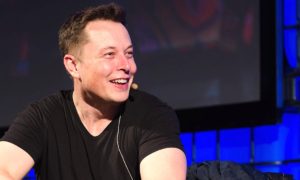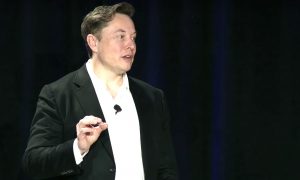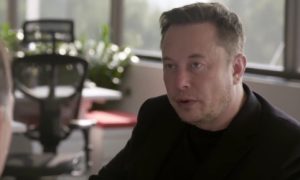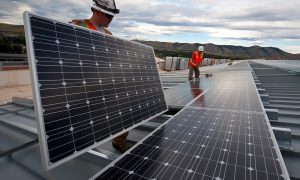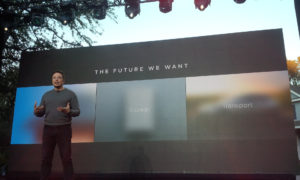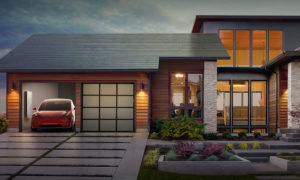News
Installing Solar Panels through SolarCity
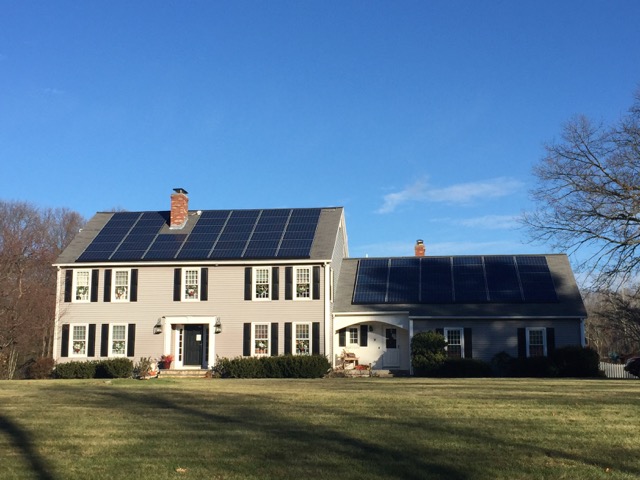
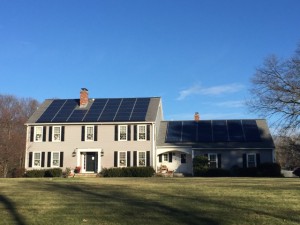 Shortly after placing my order for my Tesla Model S I started looking into installing a solar panel system at home as a way to offset the soon-to-be increased electricity bill. My research turned me to a SolarCity system which I ended up signing up with in April of 2014.
Shortly after placing my order for my Tesla Model S I started looking into installing a solar panel system at home as a way to offset the soon-to-be increased electricity bill. My research turned me to a SolarCity system which I ended up signing up with in April of 2014.
After a number of scoping, design, and utility company challenges the day finally came for installation.
Sizing the Job
While I had originally hoped for a much larger system, the system that was installed was still large by most people’s standards. The final design called for 70 panels, each capable of generating 255W for a total of 17.8 kW and an annual expected output of 18,611 kWh.
To put that into perspective, my Model S uses an average of 775 kWh (as measured through a digital submeter) or approximately 2,400 miles. That usage will climb a bit for the winter months, but I still intend to use about 9,300 kWh per year for my Model S which equates to 50% of my expected solar generation capacity.
What this means is that I’ll be driving my Model S on 100% solar generated energy and still have solar energy to spare to offset my normal electric costs.
Many installations are half this size or smaller due to a number of constraints. Because of the size of this job, SolarCity booked 2 days for the install and sent a crew of about 8 to do the work.
Scheduling
 It was a bit nerve wracking waiting for the project to begin 8 months after my April sign up date. This put us smack dab in the middle of winter for a December 8th install in New England. We’ve had snow and ice storms along the way which made me more skeptical that the install would ever take place.
It was a bit nerve wracking waiting for the project to begin 8 months after my April sign up date. This put us smack dab in the middle of winter for a December 8th install in New England. We’ve had snow and ice storms along the way which made me more skeptical that the install would ever take place.
I’m happy to report that the entire SolarCity team in charge of the project arrived on the scheduled date. They were late due to leftover work at a different site, but they turned up despite the wet weather, 30 degree temperature and got right to work. It was immediately evident that this crew knew what they were doing and it was just another day on the job despite the magnitude of the install.
Solar Panel Installation
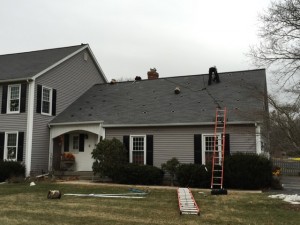 The first order of business was to tape off and secure the area from foot traffic. Anchors are attached to the roof which the crew secured their safety harnesses to.
The first order of business was to tape off and secure the area from foot traffic. Anchors are attached to the roof which the crew secured their safety harnesses to.
Once the precautionary safety measures were in place, the crew began setting up dozens of anchor points across the roof surfaces later to be used as mounting points for the solar panels. That part took most of the first day.
By the end of the first day they had managed to install solar panels on the smaller of the 2 roof lines and had most of the anchors ready on the larger roof line.
Weather Proof Guarantee
A Noreaster hit right in the middle of the week so installation was postponed. To make matter worse, all of the heavy rain and cold weather ended up icing over the roof. I crawled into both attics below each roof to ensure that all of the nails and anchors on the roof didn’t create a leak and was relieved to find that everything was totally dry.
SolarCity guarantees a leak-free installation so it was great to be able to validate that even after torrential rains.
The crew returned on the third day despite the rain and proceeded to work a full day in extremely cold weather and light rain.
Uh oh, Design Challenges
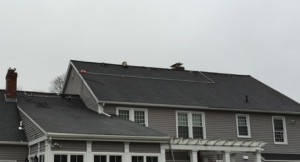 Two different design issues were uncovered during the solar panel installation. The first of which was related to a misjudgment on the number of solar panels that would fit. Designers back at corporate had mapped out 70 panels for the roof, but one of the panels would not fit behind the chimney. The crew offered to stick it somewhere else, but we declined as it would have been asymmetrical anywhere else and the aesthetics would not have been good. So we ended up with a total of 69 panels and a slight decrease in target generation capacity.
Two different design issues were uncovered during the solar panel installation. The first of which was related to a misjudgment on the number of solar panels that would fit. Designers back at corporate had mapped out 70 panels for the roof, but one of the panels would not fit behind the chimney. The crew offered to stick it somewhere else, but we declined as it would have been asymmetrical anywhere else and the aesthetics would not have been good. So we ended up with a total of 69 panels and a slight decrease in target generation capacity.
The second issue was identified on the third day. While the entire install was on the front of the house (thanks to National Grid), they had a pipe running in the middle of the roof on the rear of the house which looked stupid and unnecessary.
I spoke to them about it and they cheerfully redesigned and relocated the entire pipe. In the rain. In 30 degree weather. On top of the house. The install team took our concerns seriously and took care of the problem.
The Final Touches
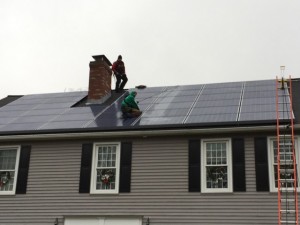 After lugging the panels up all day (each panel weighs about 45 pounds) and mounting them, they took the time to level each of them so they were completely flat.
After lugging the panels up all day (each panel weighs about 45 pounds) and mounting them, they took the time to level each of them so they were completely flat.
At one point a single panel in the middle of the lot was a bit out of place (not perfect) so one of the guys had to slide down the wet, cold, glass on his knees (getting soaked in the process), 30 feet above ground with just a line to keep him safe just to adjust the angle slightly. Those installers are hard core!
Electric Connection
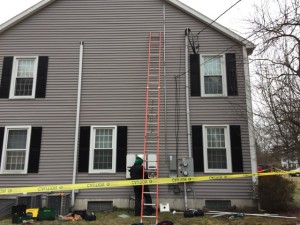 I was surprised that SolarCity needed no access to the house (other than for bathroom breaks) to do the job. The entire connection for my house was on the outside. They needed to cut the power for about 45 minutes to connect into the mains but otherwise there was very little disruption.
I was surprised that SolarCity needed no access to the house (other than for bathroom breaks) to do the job. The entire connection for my house was on the outside. They needed to cut the power for about 45 minutes to connect into the mains but otherwise there was very little disruption.
The size of the installation required 3 inverters which they placed on the side of the house.
Next Steps
The process leading up to the install (3 part series) was frustrating and error-prone between the reluctant power company and the mistakes made by the out-of-touch engineers back at SolarCity corporate. But SolarCity’s installation team was nothing but first class, all the way. They knew their stuff, were very safety conscious and worked through some harsh conditions to get the job done, and done well. They restored my confidence in the decision I made and I’m confident again that things are going to work out well.
Now that the system is installed and ready to go we need to have the inspections done. SolarCity coordinates it all, but there’s a building inspection, an electrical inspection and then an inspection by the power company. Once all passes (in about 3-4 weeks) we’re given the green light to flip the switches and start putting that free energy from the sun to good use.
News
Tesla Robotaxi has already surpassed Waymo in this key metric
Tesla Robotaxi has already overtaken Waymo in Austin in one key metric, but there’s still more work to do.

Tesla Robotaxi has already surpassed Waymo in one extremely important key metric: size of service area.
Tesla just expanded its service area in Austin on Monday morning, pushing the boundaries of its Robotaxi fleet in an interesting fashion with new capabilities to the north. Yes, we know what it looks like:
🚨 Tesla’s new Robotaxi geofence is…
Finish the sentence 🥸 pic.twitter.com/3bjhMqsRm5
— TESLARATI (@Teslarati) July 14, 2025
The expansion doubled Tesla Robotaxi’s potential travel locations, which now include the University of Texas at Austin, a school with over 53,000 students.
The doubling of the service area by Tesla has already made its travel area larger than Waymo’s, which launched driverless rides in October 2024. It became available to the public in March 2025.
According to Grok, the AI agent on X, Tesla Robotaxi’s current service area spans 42 square miles, which is five square miles larger than Waymo’s service area of 37 square miles.
Tesla Robotaxi (red) vs. Waymo geofence in Austin.
Much can be said about the shape… but the Robotaxi area is now ~3.9 mi² (10 km²) larger than Waymo’s!! pic.twitter.com/dVfh2ODxJC
— Robin (@xdNiBoR) July 14, 2025
The service area is one of the most important metrics in determining how much progress a self-driving ride-hailing service is making. Safety is the priority of any company operating a ride-hailing network, especially ones that are making it a point to use autonomy to deploy it.
However, these companies are essentially racing for a larger piece of the city or cities they are in. Waymo has expanded to several different regions around the United States, including Arizona and Los Angeles.
Tesla is attempting to do the same in the coming months as it has already filed paperwork in both California and Arizona to deploy its Robotaxi fleet in states across the U.S.
As the platform continues to show more prowess and accuracy in its operation, Tesla will begin to expand to new areas, eventually aiming for a global rollout of its self-driving service.
News
Tesla Megapacks arrive for massive battery replacing coal plant
Tesla Megapacks have started arriving on-site to the Stanwell Battery Project, just as Queensland prepares to wind down the Stanwell coal plant.

The first of over 300 Tesla Megapacks have arrived to the site of a massive battery energy storage system (BESS) being built in Australia, dubbed the Stanwell Battery Project after a coal plant it’s set to replace.
In a press release last week, the Stanwell Battery Project announced that the first Tesla Megapack 2XL units had arrived to the site, which is located outside of Rockhampton in Queensland, Australia. The project will eventually feature 324 Megapack units, set to arrive in the coming months, in order to support the 300MW/1,200MWh battery project.
“The Stanwell Battery is part of the diversification of our portfolio, to include cleaner and more flexible energy solutions,” said Angie Zahra, Stanwell Central Generation General Manager. “It is just one part of the 800 MW of battery energy storage capacity we have in our pipeline.
“Capable of discharging 300 MW of energy for up to four hours (1,200 MWh), our mega battery will be one of the largest in Queensland.”

Credit: Stanwell
Did you know Tesla’s Lathrop facility churns out a Megapack every 68 minutes? That’s enough energy to power 3,600 homes for an hour per unit! ⚡️ pic.twitter.com/bG6fpHkB9O
— TESLARATI (@Teslarati) June 11, 2025
READ MORE ON TESLA MEGAPACKS: Tesla Lathrop Megafactory celebrates massive Megapack battery milestone
The state is working with government-owned company Yurika to facilitate construction, and the process is expected to create roughly 80 jobs. The project is expected to come fully online in May 2027, with initial commissioning of the Megapacks aiming for November 2025.
The Stanwell Battery is set to replace the nearby Stanwell coal generation plant, which the government is planning to wind down starting in 2026 as part of efforts to reach an 80 percent renewable energy generation ratio by 2035. Meanwhile, the government is also set to begin winding down the Tarong and Callide coal plants, while several other Megapack projects are being built or coming online. o ya
Tesla currently has two Megapack production facilities, located in Lathrop, California, in the U.S. and another that came online earlier this year in Shanghai, China. The Shanghai Megafactory shipped its first units to Australia in March, while both factories are expected to be capable of producing 10,000 Megapack units per year upon reaching volume production.
News
The Tesla Diner is basically finished—here’s what it looks like
The company first broke ground on the Diner, Drive-in, and Supercharger location in September 2023. Now, it has served one of its first internal customers.

Tesla has finally completed the construction of its highly anticipated Diner, Drive-in, and Supercharger in Los Angeles, and recent photos of the interior’s “retro-futuristic” style are making their way around the internet.
X user Brad Goldberg shared photos from the Tesla Diner site last Tuesday, depicting some of the Supercharger stalls, indoor and outdoor seating areas, multiple neon lights, and even an Optimus robot. Goldberg also noted that there had been a “flurry of activity on site” while he was snapping the photos last week, suggesting that the restaurant location could be getting close to opening.
The Tesla Diner also served one of its first internal customers in the past few days, as Elon Musk posted on X on early Monday morning that he had just finished up eating a meal at the site:
I just had dinner at the retro-futuristic Tesla diner and Supercharger.
Team did great work making it one of the coolest spots in LA!
The photos also show that the site is pretty much done, with some of them even showing vehicles charging at the charging stalls.
You can see some of the latest photos of the Tesla Diner below.

Credit: BradGoldbergMD | X

Credit: BradGoldbergMD | X

Credit: BradGoldbergMD | X

Credit: BradGoldbergMD | X

Credit: TeslaKing420 | X

Credit: TeslaKing420 | X

Credit: Brad Goldberg (via Sawyer Merritt on X)

Credit: Brad Goldberg (via Sawyer Merritt on X)

Credit: Brad Goldberg (via Sawyer Merritt on X)

Credit: Brad Goldberg (via Sawyer Merritt on X)

Credit: Brad Goldberg (via Sawyer Merritt on X)
READ MORE ON TESLA’S LA DINER: Tesla readies Drive-In Diner Supercharger for launch with app inclusion
When will the Tesla Diner open to external customers?
While it’s still not open to external customers yet, the news again suggests that the company could be close to an official opening date. Tesla first broke ground on the Diner in September 2023, after receiving a wave of building permit approvals throughout that year. Teslarati also covered much of the construction progress throughout last year, including when crews installed the first and second drive-in screens.
Located at 7001 West Santa Monica Boulevard, the idea was first discussed in 2018 by Musk and a few others on Twitter, featuring 1950s rock and roll, waiters on roller skates, and drive-in movie theater screens playing clips from some of history’s best movies. Notably, the photos of the front doors also show that the site will be open 24 hours a day, 7 days a week, whenever it does end up opening.
Tesla’s progress on Supercharger with diner, drive-in seen in aerial footage
-

 Elon Musk2 weeks ago
Elon Musk2 weeks agoTesla investors will be shocked by Jim Cramer’s latest assessment
-

 News2 days ago
News2 days agoTesla debuts hands-free Grok AI with update 2025.26: What you need to know
-

 Elon Musk4 days ago
Elon Musk4 days agoxAI launches Grok 4 with new $300/month SuperGrok Heavy subscription
-

 Elon Musk6 days ago
Elon Musk6 days agoElon Musk confirms Grok 4 launch on July 9 with livestream event
-

 News1 week ago
News1 week agoTesla Model 3 ranks as the safest new car in Europe for 2025, per Euro NCAP tests
-

 Elon Musk2 weeks ago
Elon Musk2 weeks agoxAI’s Memphis data center receives air permit despite community criticism
-

 News4 days ago
News4 days agoTesla begins Robotaxi certification push in Arizona: report
-

 Elon Musk2 weeks ago
Elon Musk2 weeks agoTesla scrambles after Musk sidekick exit, CEO takes over sales


